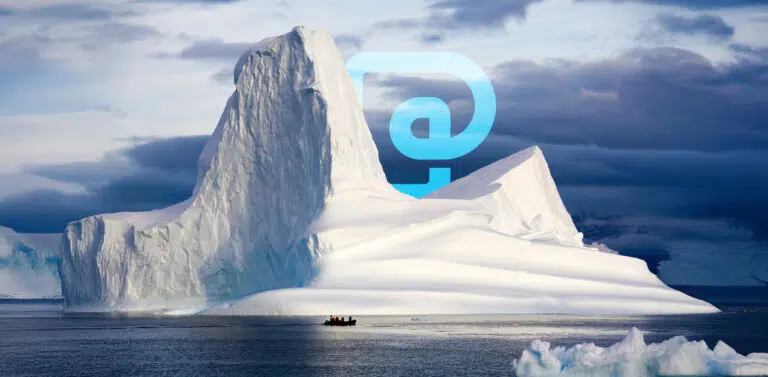Welcome to this guide to the polar regions of the world, based on my firsthand knowledge and expertise in exploring the Arctic and Antarctic.
As you plan your next trip, this in-depth guide will help you to understand:
- Where the polar regions are located
- The weather and climate of the Arctic & Antarctica
- Who lives in the polar regions
- The wildlife of the polar regions
- My advice for travelling in the polar regions
Let’s dive in!
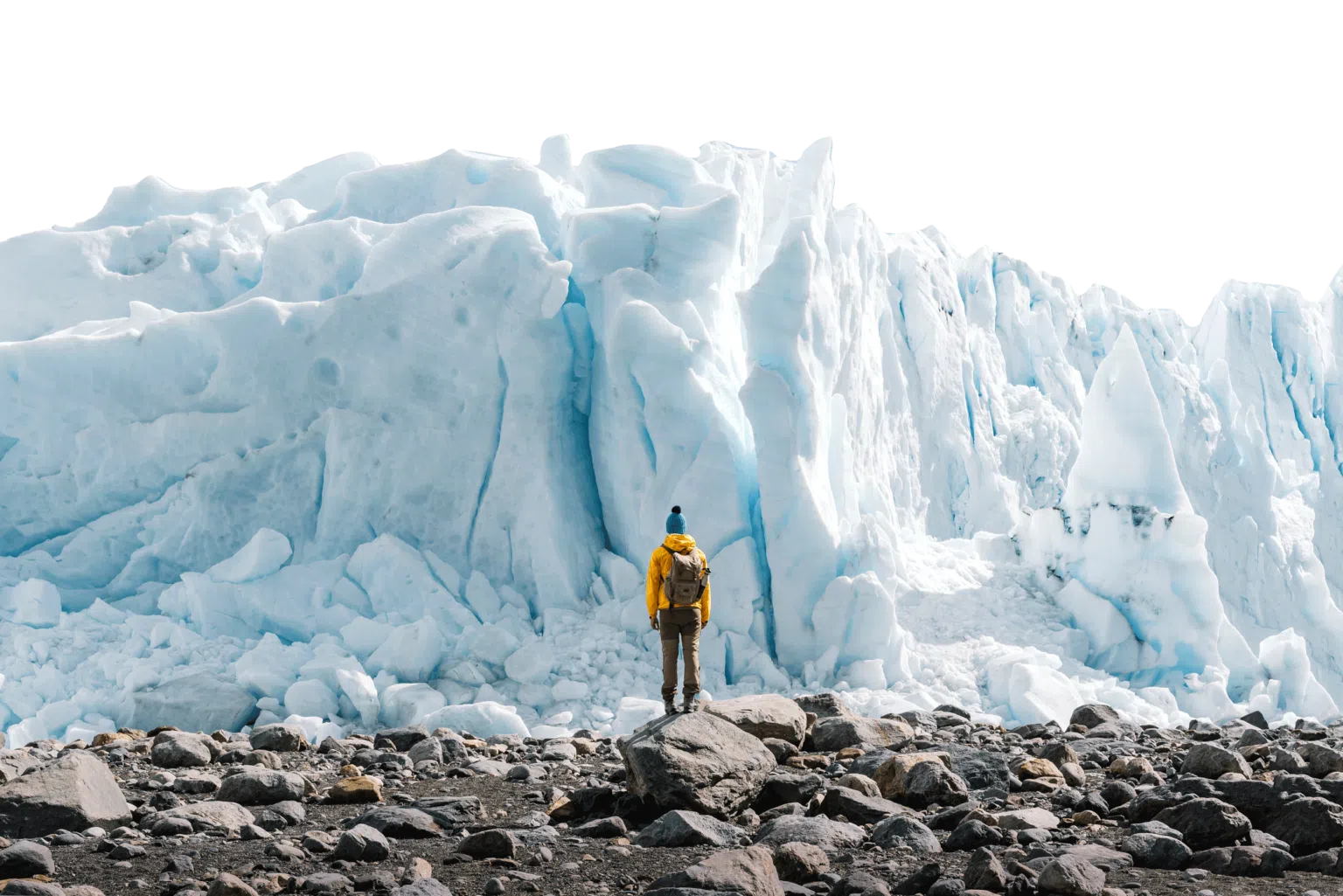
Table Of Contents
The polar regions of the world, also known as polar zones- are some of the planet’s most unspoilt, pristine places. No wonder travellers who visit them often want to return, known as getting ‘The ‘Polar bug.’
I know because it happened to me. First, I visited Svalbard, then Antarctica, South Georgia, and Greenland multiple times. I then started Polar Escapes to make polar travel easier for others. So it is safe to say the Polar Bug is real.
The question is, what Polar region of Earth will you visit?
What Is A Polar Region?
The polar regions are defined as “the regions within the Arctic and Antarctic circles“
Polar regions are parts of the world with distinct features such as a cold climate, frigid temperatures, ice caps, heavy glaciation, and no trees due to permafrost. During the winter, there are 24 hours of constant darkness, known as the polar night, contrasted by 24 hours of sunlight during the summer, the midnight sun.
The first time I visited the Arctic, I was taken aback by how different it looked. The lack of trees contrasted with the vast icy landscapes is both stark and breathtaking.
Here are some facts about the polar regions:
- The Earth has two polar regions: the Arctic, in the northern hemisphere and Antarctica, in the southern hemisphere.
- These are the coldest places on the planet, with temperatures below -40 degrees Celsius in the winter in Antarctica.
- The polar regions are also known as polar or frigid zones because of their low temperatures.
- They are the least inhabited places on the planet due to extremely low temperatures.
- The Polar regions Earth are the least explored places. While tourism is growing, many areas have yet to be explored in Antarctica.
- The Arctic and Antarctic are home to some of the world’s most unique wildlife, which is only found in polar habitats and is distinct to each region, from polar bears in the North to Emperor penguins in the south.
- At the top of the world, the Arctic Ocean is the world’s smallest and shallowest ocean. It’s also the least studied ocean.
- The southern ocean surrounding Antarctica is the roughest ocean on Earth due to the wind and the absence of a land mass to break up the momentum of the sea.
- The Arctic and Antarctic combined comprise roughly 8% of the Earth’s surface area.
So we know the basics. In the next section, I will look at the locations of the polar regions.
Where are the polar regions located?
The polar regions are located at the planet’s northern and southern extremities, extending from the Poles to beyond the Arctic and Antarctic circles.
- The northern polar region of the Arctic extends from the North Pole at 90° north to the Arctic Circle at 66°33′47.5. Certain areas of Greenland and Canada south of the Arctic Circle also have polar climates and are considered part of the Arctic region.
- The southern polar region of Antarctica extends from the South Pole at 90° south to the Antarctic convergence zone, a constantly shifting line defined by oceanic currents. The Antarctic Treaty establishes the boundary of Antarctica as South of 6o°S.
- The area of the polar regions is open to interpretation as there is no fixed boundary other than the polar circles. In Antarctica, much of the Antarctic Peninsula is north of the polar circle and part of the polar region.
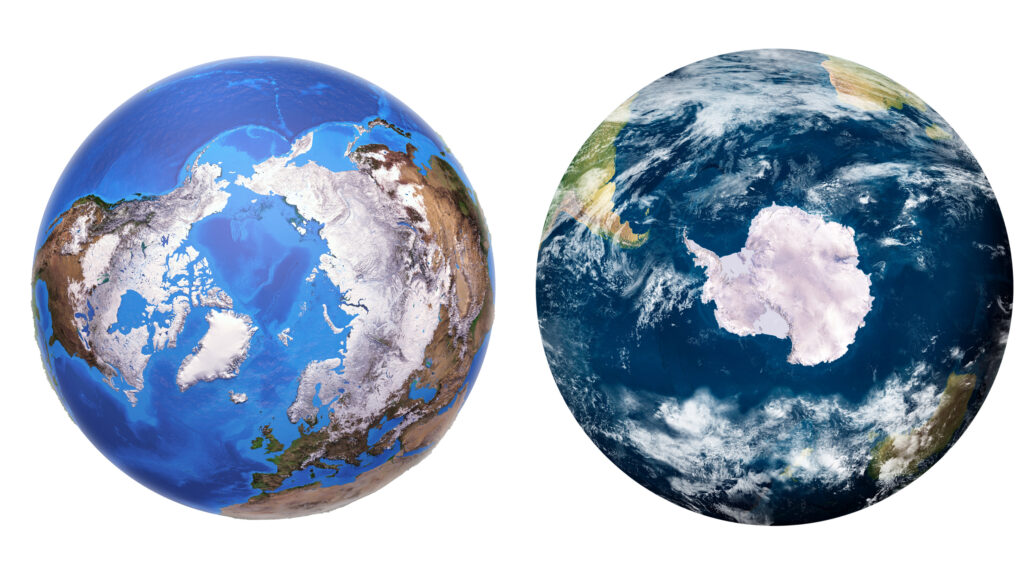
And now for a geography lesson.
Geography Of The Polar Regions
While the polar regions share many similarities, such as sea ice, glaciers, and ice caps, they are very different geographically.
The Arctic – A frozen Ocean In the northern polar region
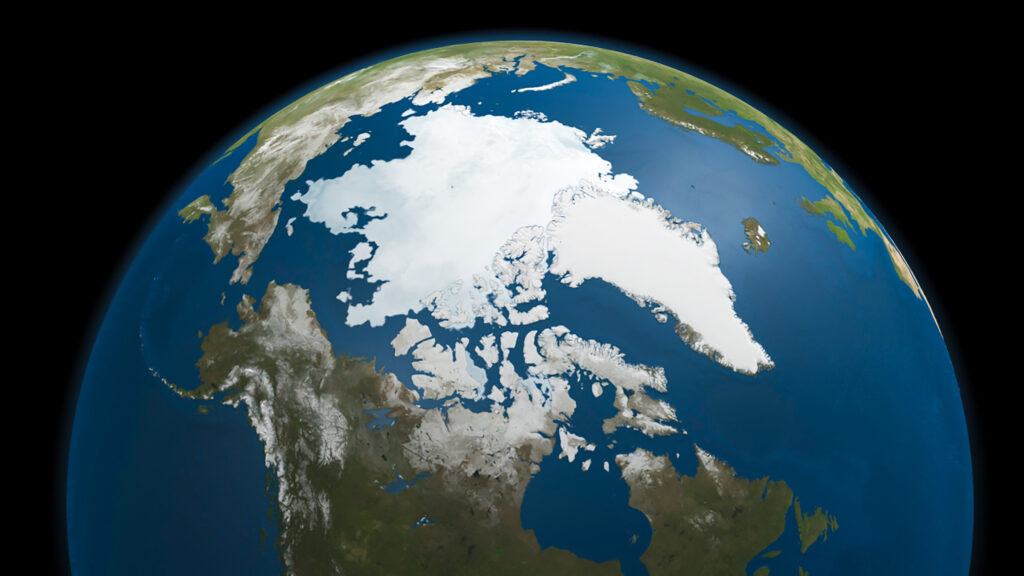
The Arctic is primarily made up of the Arctic Ocean, which freezes during winter and recedes during summer. At the North Pole, the sea is frozen all year round. Huge Ice sheets shift back and forth, carried by the wind and currents, extending to Svalbard 800 miles to the south. There is no land mass at the North Pole.
Travel Tip: An expedition ship from Svalbard can take you to the edge of the sea ice. It’s a spectacular site, and the sound the floating ice makes is out of this world. If you get lucky, you may even see a polar bear.
The Arctic Ocean is dotted with remote islands such as Jan Mayen, Svalbard, and Franz Josef. It is surrounded by land, including eight countries: Greenland, Canada, Russia, Alaska (USA), Norway, Finland, Sweden, and a small part of Iceland.
Antarctica – A frozen continent in the southern polar region
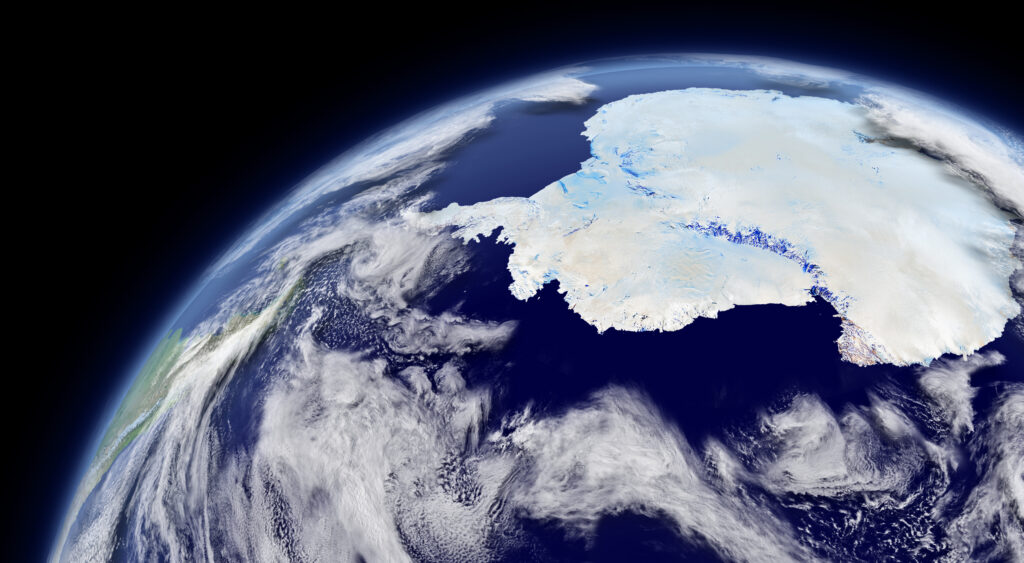
Antarctica is a continent with a landmass covered by 98% ice and surrounded by the turbulent southern ocean. Unlike the Arctic, Antarctica is a continent (but not a country). It’s known as the coldest, windiest and only continent on Earth with no permanent human population.
The Antarctic ice sheet is the largest on the planet and the only ice sheet to cover an entire continent. It holds 61% of all fresh water on Earth. If it melted, it is predicted that it could raise sea levels by over 70 meters! The ice in Antarctica is, on average, 2.2km thick. You would have to dig down 4.9km at the highest elevation to reach the land below the ice.
Travel Tip: Most travel to Antarctica occurs along the coastline, where the temperatures are milder than in the interior. A great way to experience Antarctica is on an expedition cruise crossing the Drake Passage to the Antarctic Peninsula or the Ross Sea.
Did You know that the diameter of the polar circle is approximately 16,000 kilometres?
The North and South Poles
- The North Pole is at sea level, while the South Pole is at an elevation of 2835m.
- Due to its elevation and location on the Antarctic ice sheet, the South Pole is much colder than the North Pole. During the summer, the South Pole average is -25° to -29°, while the North Pole average is 0° at the height of summer.
- The South Pole is more remote. The nearest city to it is Ushuaia, 2,432 miles (3,914km) away. The nearest city to the North Pole is Longyearbyen, 814 miles (1,316km) to the south.
Travel Tip: Visiting the North and South Pole is possible. The North Pole can be reached on an icebreaker cruise, and it is possible to fly to the South Pole on an expedition.
What is the difference between the Arctic and Antarctica?
Here are the key differences:
- Antarctica is significantly colder than the Arctic. The North Atlantic Ocean conveys warm water from the Gulf Stream into the Arctic Ocean, which has a warming effect. In Antarctica, the ice sheet acts as a giant cooler, creating lower temperatures.
- The Antarctic continent is a land mass covered by a thick ice sheet. The Arctic is an ocean covered by sea ice and surrounded by land.
- The Arctic regions have a population of 4 million, including 400,000 Indigenous people across Northern Canada, Greenland and Scandinavia. Antarctica has no permanent population and no Indigenous people.
- Antarctica is a continent but not a country. The Arctic is a region consisting of 8 nations.
- Antarctica and the Arctic have opposite seasons. When it is summer in the Arctic, it is winter in Antarctica, and vice versa.
To learn more, please see our Arctic Vs Antarctica comparison for travellers.
Now that you know about the geography of the polar regions, let’s examine their climate and weather.
The Weather & Climate in the Polar Regions Explained
The climate and weather of the polar regions are influenced by their far-northerly and southerly positions on the globe. They are known for being the coldest and least hospitable places on the planet. But do you know why?
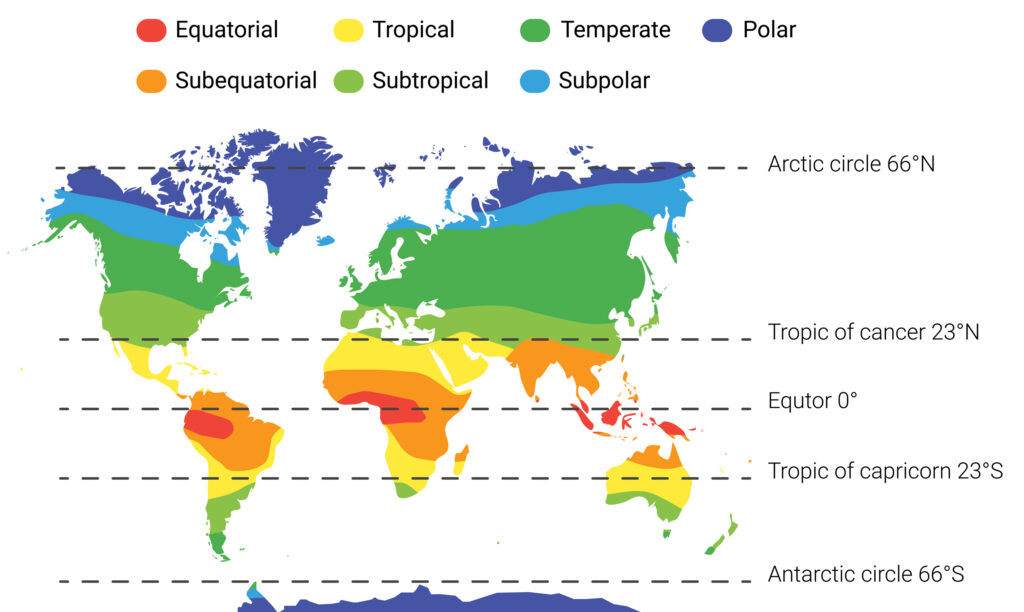
Why are the polar regions so cold?
Due to the tilt of the Earth’s axis, the polar regions receive less concentrated sunlight than other parts of the planet. Direct sunlight is weaker the further north or south you travel from the equator. The cold temperatures are enhanced by the amount of ice and snow, reflecting sunlight and bouncing UV rays back into space. The polar regions act as giant refrigerators, helping to cool the rest of the planet.
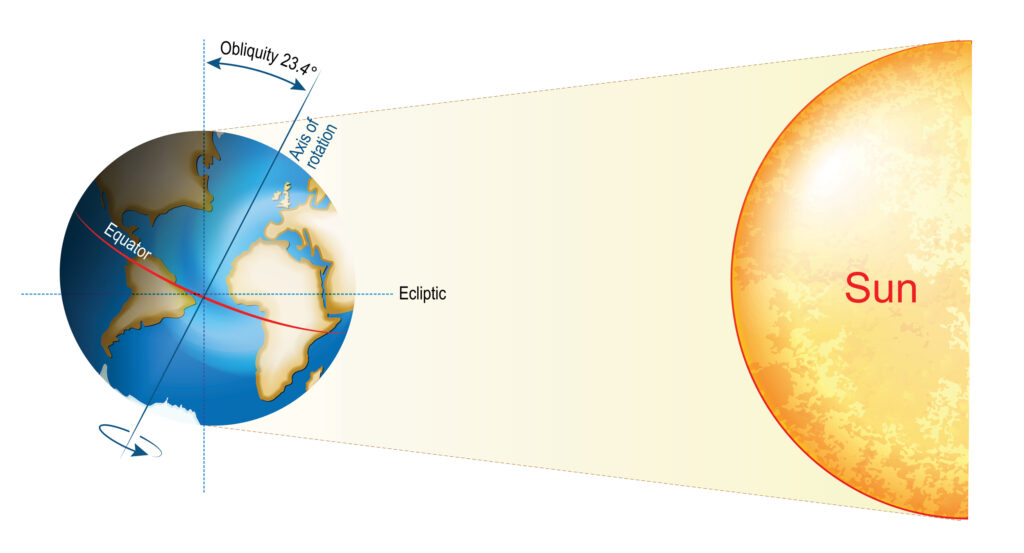
Arctic weather and climate
The Arctic climate consists of long, cold winters with 24 hours of darkness and cool summer temperatures. The Arctic Ocean has a warming effect on the region, as the sea temperature never dips below −2 °C. This explains why the North Pole is not the coldest place in the Arctic. The Greenland Ice sheet covers 80% of Greenland and holds the lowest temperatures recorded in the Arctic at -69.6°C.
In Svalbard in the High Arctic (one of our favourite expedition cruising destinations), the temperature at the height of the summer months varies between 4° C and 8° C. Due to the high pressure above the Arctic during summer, it is often sunny with little wind and occasional fog.
Antarctica Weather and Climate
Antarctica has an ice-capped climate that is extremely cold, dry, and windy. Due to the lack of precipitation, which averages 50mm per year, it is the largest desert on Earth.
The colossal glacial ice sheet covering Antarctica formed by snowfall has a cooling effect across the continent. The average temperature throughout the year in the interior is -57°. The coldest temperature recorded in Antarctica was -93.2 C (-136 F) on the East Antarctic Plateau.
But have no fear; the coast of Antarctica is milder than the interior of the places you are likely to visit. The average coastal temperatures vary between -2° C and – 8° C during summer. Katabatic winds are common, along with snow and occasional rain.
To find out more about the weather of Antarctica please see How Cold Is Antarctica?
Polar Night Vs Midnight Sun
Another effect of the angle of the Earth’s tilt that can not be seen anywhere else is the 24 hours of darkness in the winter (the polar night) contrasted by 24 hours of daylight (the midnight sun during the summer.
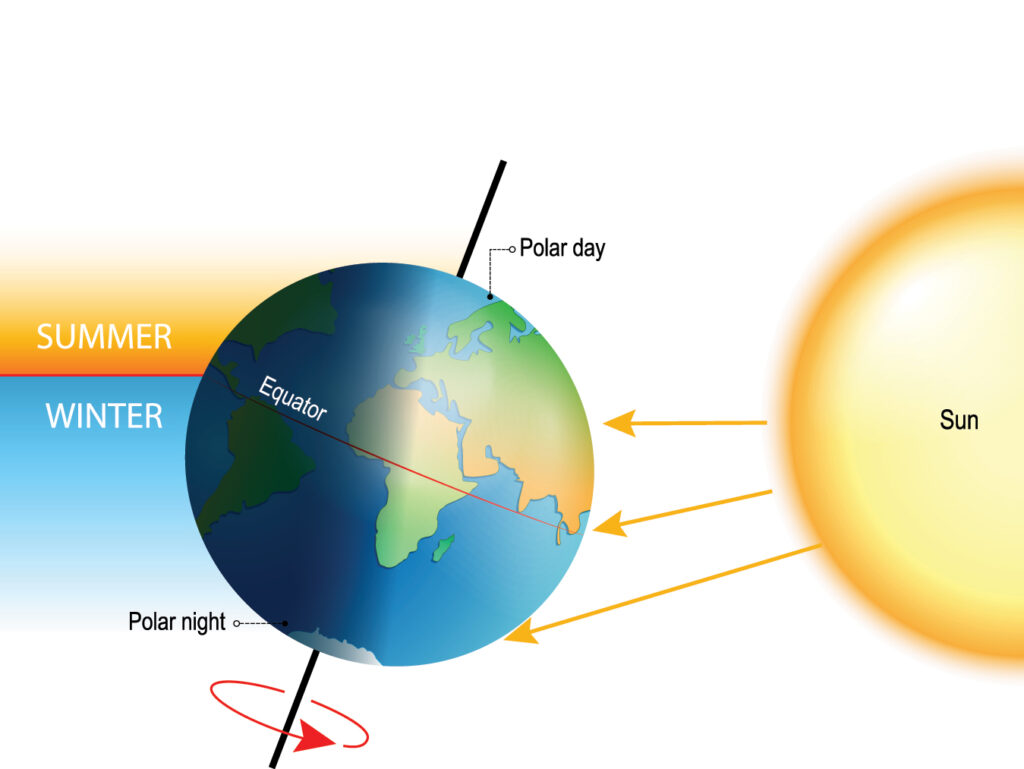
- The Midnight sun is visible from the polar circles to the poles on the summer solstice. The further towards the pole you travel, the longer the viewing period of the midnight sun.
- The midnight sun is visible 6 months per year at the north and south poles. This is reversed during the winter, when there are 6 months of polar night. This means there is only one sunrise and one sunset per year.
- Due to its far northerly location, the midnight sun is visible in Svalbard between April 19th and August 23rd and the polar night between November 14th and January 29th.
Wildlife in the Polar Regions
One of the highlights of visiting the polar regions and a significant reason travellers come from all over the world is to see the distinct species of animals that can be found nowhere else on Earth. Animals in the polar climate have adapted to withstand the harsh environment and long periods of sunlight and darkness.
Here are some top species that have adapted to survive living in the polar regions:
Polar Bears
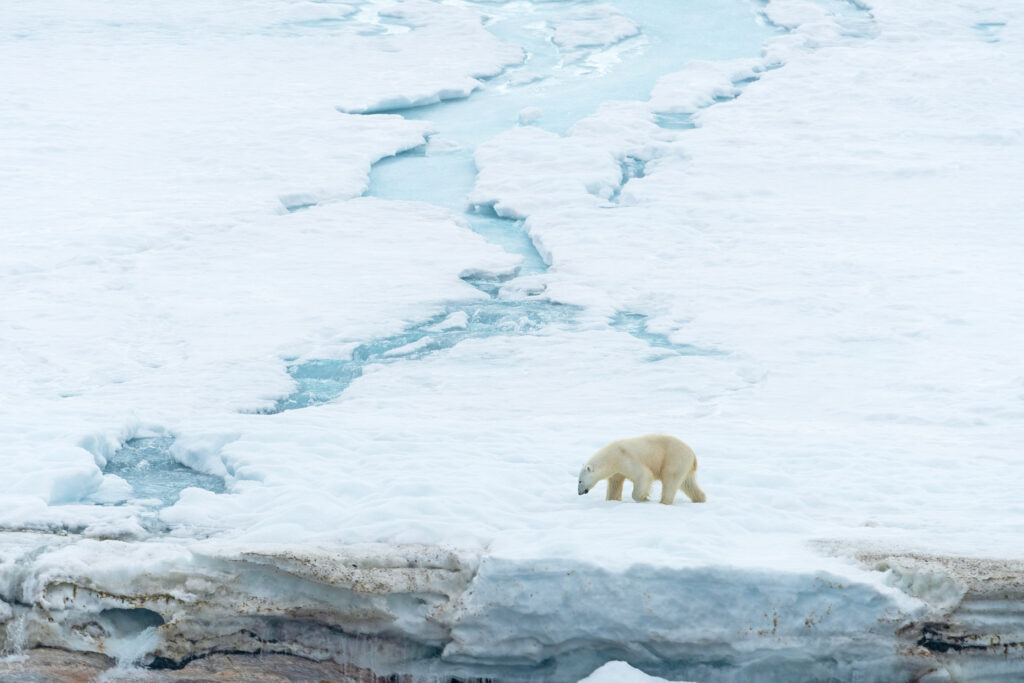
Polar bears are year-round inhabitants only found in the Arctic and have evolved to survive the extreme climate. They have two layers of extremely thick fur and a dense layer of fat to survive the Arctic winters. Large, insulated paws allow them to walk on the snow and ice.
Emperor Penguins
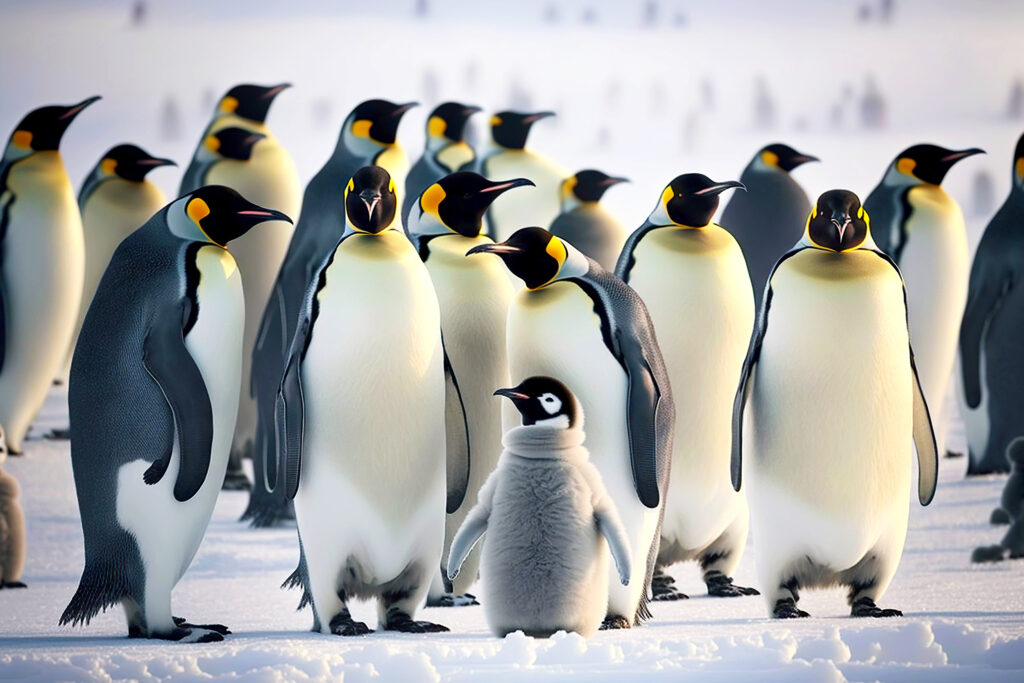
Emperor penguins have adapted to survive temperatures as low as -50°C. During the depths of Antarctica’s winter, colonies of Emperor Penguins huddle together to share warmth. Their two layers of feathers, fat reserves, and well-insulated legs help them endure the freezing temperatures.
Walruses
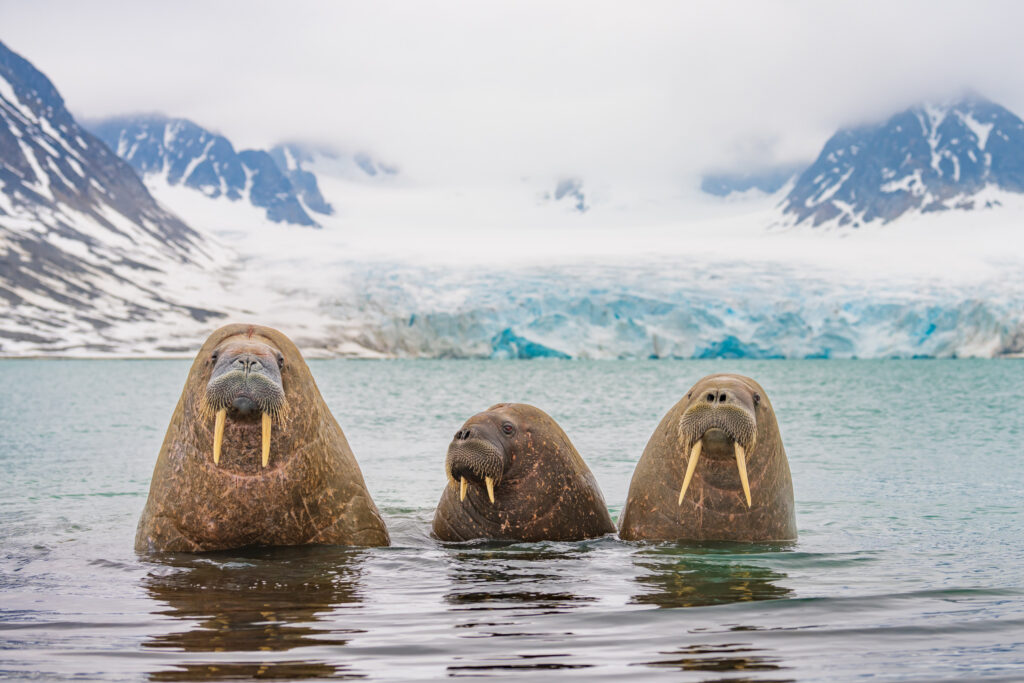
Walruses have a thick layer of blubber for insulation that acts as an energy store. An adult walrus can weigh up to 1,000kg. Walruses congregate in pods on the shores of the Arctic to share warmth. During the winter, they are capable of surviving temperatures as low as -35°C
Leopard Seals
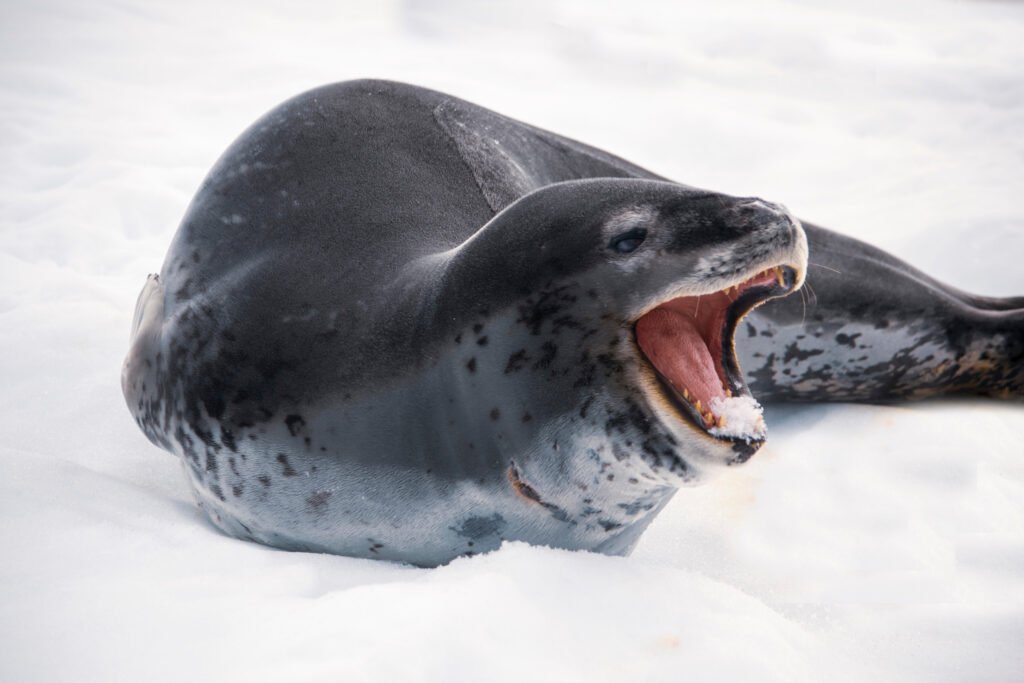
Known for their ferocious jaws, leopard seals are active throughout Antarctica’s icy waters all year. A thick layer of blubber protects the seal from the sub-zero temperatures as it dives for up to 40 minutes. Leopard seals come out of the water to rest on the ice, which is warmer than the water.
Arctic Foxes
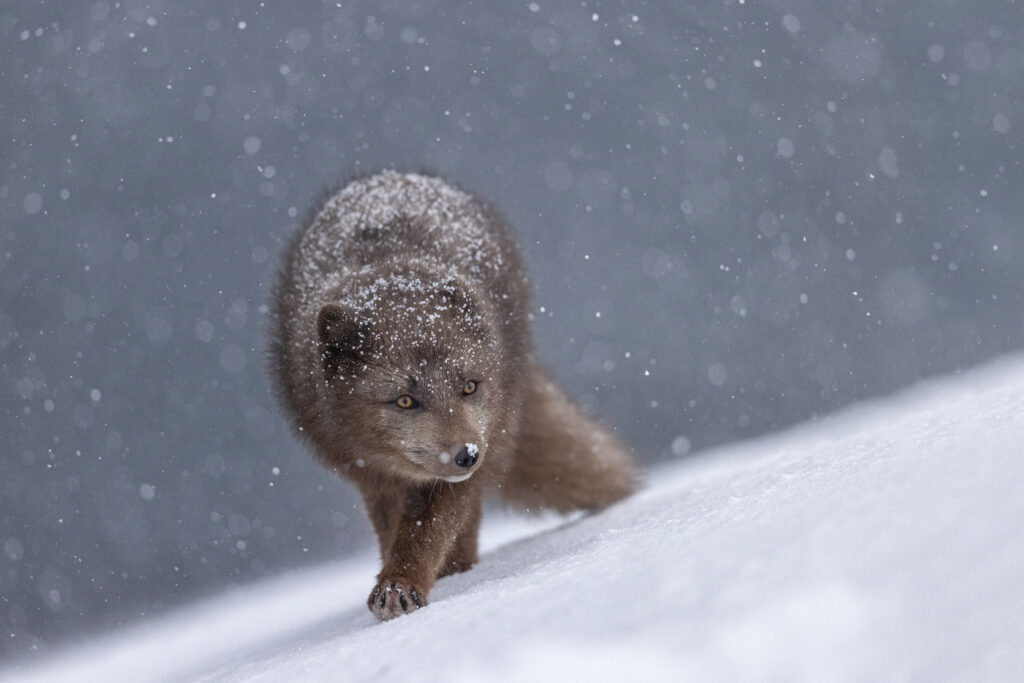
Arctic foxes have adapted to live in the extreme cold of the Arctic all year round. Thanks to a thick layer of fur, short legs and ears, and fur on their paws, Arctic foxes can maintain a body temperature of 38°C when the temperature plummets in winter. Their fur is white during the winter to blend in with the snow, and it changes to brown during the summer months to blend in with the tundra in the changing landscape.
For a complete list of wildlife in the polar regions, please see our Arctic Wildlife and Antarctic wildlife guides.
Next, let’s look at who lives in the polar regions.
Who Lives in The Polar Regions
Unlike Antarctica, which has no permanent inhabitants or indigenous population, the Arctic is home to an estimated 4 million people. An estimated 400,000 people are indigenous from 40 different ethnic groups, including the Inuit in Greenland and the Canadian Arctic, Chukchi in Siberia, and the Sámi in northern Scandinavia.
The Arctic is one of the least densely populated places on the planet. The vast Canadian Arctic covers 40% of Canada’s territory but is home to just 150,000 people. Half of them are Indigenous people living in 53 remote communities.
Greenland, in comparison, has an area of 2 million km2 and a population of a mere 56,000, making it the least populated country on Earth. 88.9% of the population is Greenlandic Inuit.
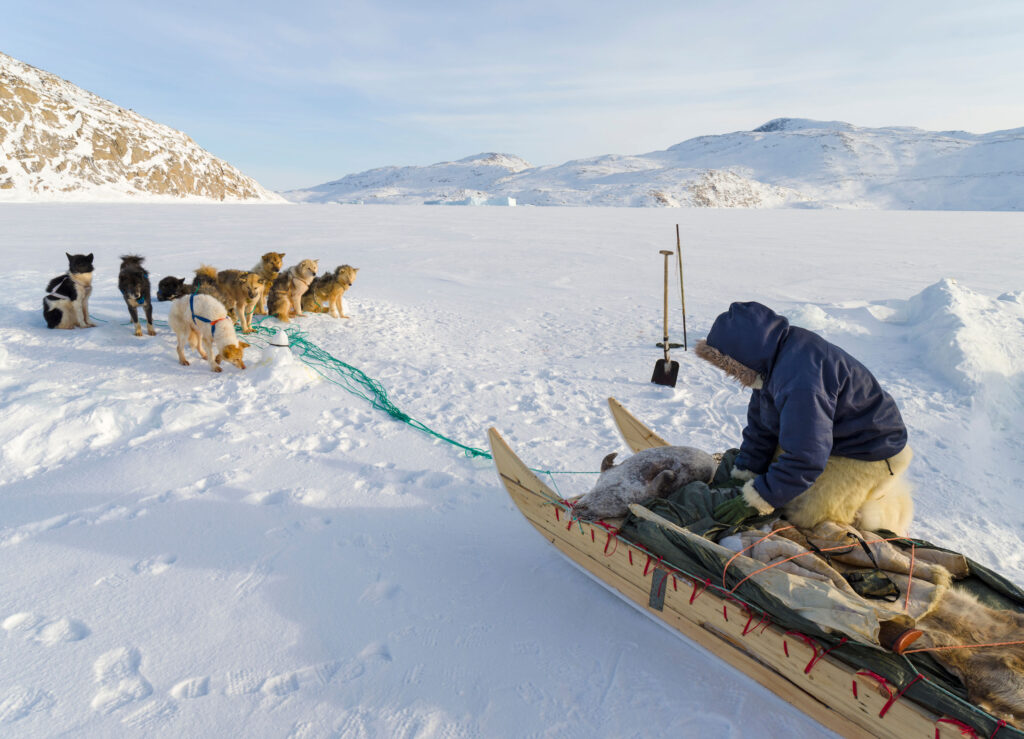
Due to its severe climate and exceptionally remote location, Antarctica has no permanent or Indigenous population. Its temporary human population consists of scientists, researchers, and field staff.
Up to 5,000 people live in research stations and camps throughout Antarctica during the summer. There are 70 permanent scientific research stations in Antarctica, including McMurdo Station (USA), Esperanza (Argentina), Rothera (UK), Scott Base (New Zealand), and Vostok (Russia).
To learn more about the population of Antarctica please see our article Do People Live In Antarctica?
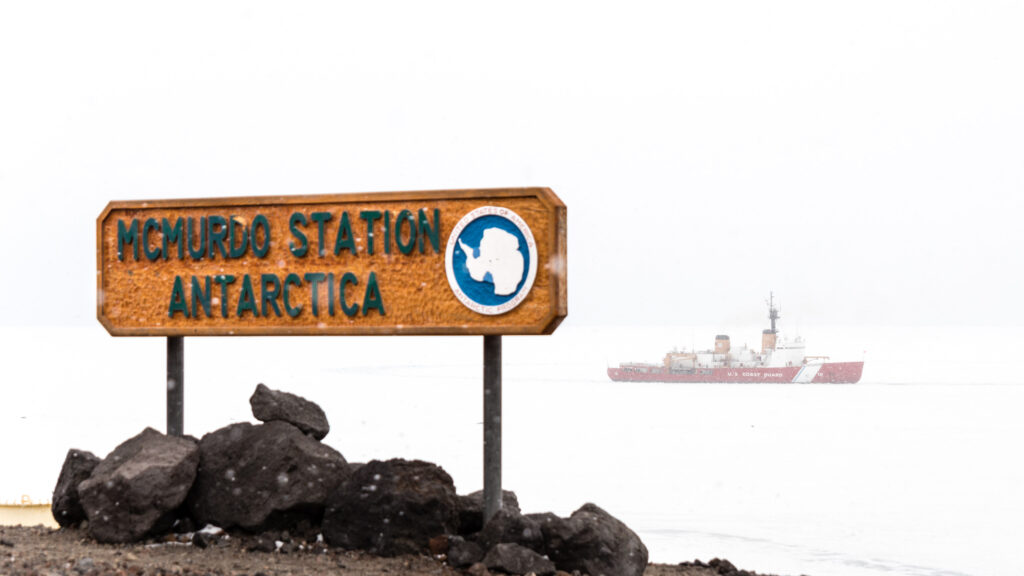
Climate Change and Human Impact on the Polar Regions
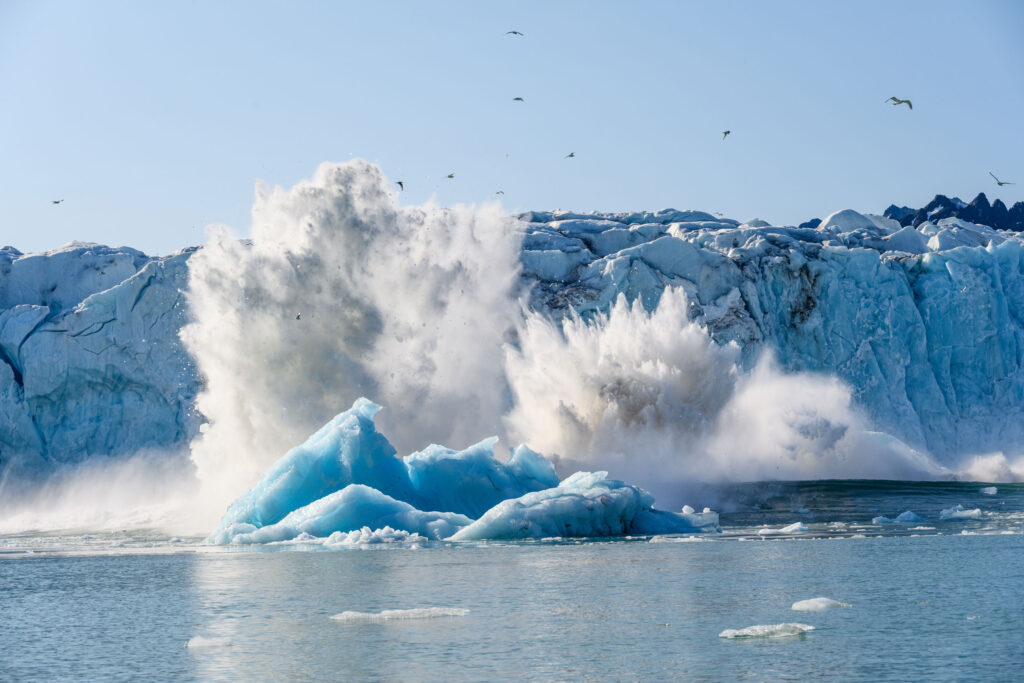
No places on Earth feel the effects of climate change more than the polar regions. Since 1979, the Arctic has been warming four times faster than the rest of the planet, known as Arctic amplification.
This is caused by ice-Albedo feedback, whereas as the temperature warms, more sea ice melts. This in turn exposes darker water in the polar regions which absorbs more heat. This creates more exposed ocean, which, unlike ice, absorbs the sun’s energy. This, in turn, creates warmer temperatures, which melt more ice in a feedback loop.
Less ice means there is less sunlight being reflected which is contributing to rising temperatures across the planet. As permafrost melts methane deposits are released back into the atmosphere. Methane is a greenhouse gas that prevents heat from leaving the atmosphere.
Warmer temperatures in Antarctica are impacting ecosystems and shrinking penguin colonies. Due to less sea ice coverage, krill populations have been declining. As a result, the number of Adélie penguins relevant to Krill as a food source has declined.
Temperatures in the Arctic are rising rapidly and it is predicted the arctic will have no sea ice during the summer by 2035.
As you plan your trip to the polar regions, consider things you can do to make your visit have the least impact, such as offsetting your carbon and looking for ways to reduce emissions in other areas of your life.
A brief history of exploration of the polar regions
Due to its proximity to civilisation and native population, the Arctic was discovered long before Antarctica. Before European explorers arrived in the 1500s, Indigenous people had lived in the Arctic region for millennia.
Here are some key dates in the discovery and exploration of the polar regions:
- 985 – norse explorer Eric the Red explores the Arctic and reaches Greenland
- 1497 – John Cabot explores North America, attempting to find the fabled Northwest Passage.
- 1596 -the Dutch explorer William Barentz discovers Svalbard
- 1820 -Antarctica is sighted for the first time by a Russian expedition led by Bellingshausen
- 1821—An American sealer named John Davis made the first landing on Antarctica, although the claim remains disputed.
- 1842 – Charles Wilkes maps the coastline of Antarctica
- 1843 – The Ross Sea and Mount Erebus were discovered by people other than James Clark Ross.
- 1847—Sir John Franklin dies while attempting to reach the Northwest Passage. His men are never seen again.
- 1906 – The Norweigan explorer Roald Amundsen becomes the first person to traverse the Northwest Passage successfully.
- 1909 – Robert Peary and Matthew Henson attempt to reach the North Pole. They claim they were the first, but this is heavily disputed today.
- 1911 – Roal Amundsen and his expedition became the first humans to reach the South Pole on December 14th.
- 1912—Robert Falcon Scott reaches the South Pole, beaten narrowly by Amudsen, but tragically perishes towards the end of the expedition.
- 1926 – Amundsen becomes the first confirmed person to reach the North Pole on the airship Norge.
- 1993 – Ann Bancroft becomes the first woman to reach the North and South Poles.
To learn more about the history of the polar regions check out 21 famous polar explorers you should know.
Travelling to the polar regions
Travelling in the polar regions is a life-changing experience. I have been fortunate enough to visit the north and south polar regions, and nothing compares.
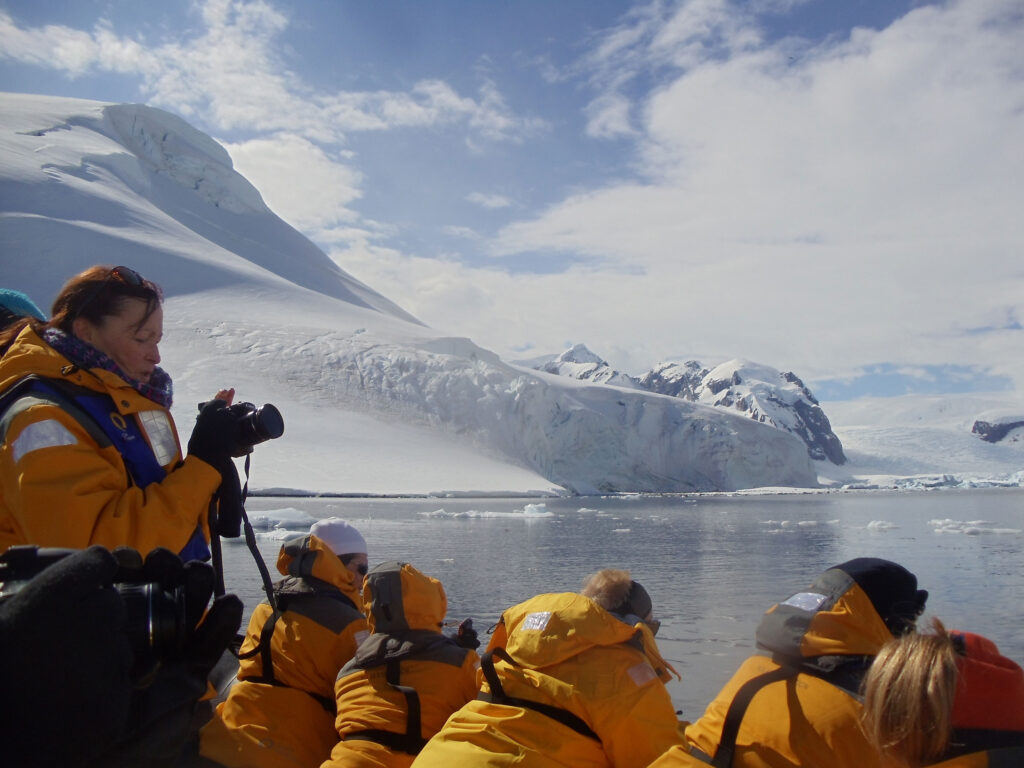
Here are my top tips for travelling in the polar regions:
- Expedition cruises offer an excellent way to see remote places otherwise inaccessible, such as the Antarctic Peninsula and the Northwest Passage.
- For the best experience, choose a small expedition ship. At Polar Escapes, we have the largest selection of expedition ships in the polar regions.
- Choose an expedition that aligns with your interests, such as wildlife watching, luxury, or adventure. At Polar Escapes, we can help you with this!
- Dress for the weather. The polar regions are cold, and it’s essential to have the correct gear, such as an insulated jacket, waterproof trousers, and warm layers, not to mention a hat, gloves, and a neck warmer.
- Grab the binoculars. Wildlife is one of the many highlights of a trip to the polar regions, and a pair of good-quality binoculars are essential for spotting wildlife at a distance.
- Learn before you go. Do background reading before you go and enjoy onboard lectures to understand the environment better.
- Remember travel insurance! Comprehensive travel insurance is a must for remote polar travel. Ensure your policy covers the area you visit and covers cancellation and evacuation.
At Polar Escapes, we specialise in travel to the polar regions. We share our firsthand knowledge with our travellers to help them choose where to visit and what ship to choose.
For some inspiration about travelling to the polar regions why not read our 33 Polar Region Places you can visit or our Ultimate Polar Bucket List?
If you still need convincing 10 Reasons To Travel To The Polar Regions gives an overview of all the reasons why you should consider travelling to the polar regions.
Remember you can search and book the largest selection of Arctic cruises and Antarctica cruises with Polar Escapes.
As you plan your trip to the polar regions, why not contact us to see how we can help you make it perfect?
Thanks for reading, and happy exploring.
Most emails are boring.
Ours are cool.


